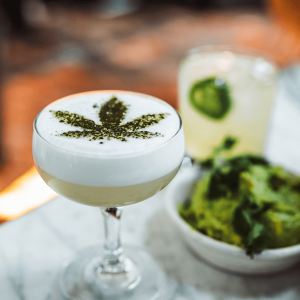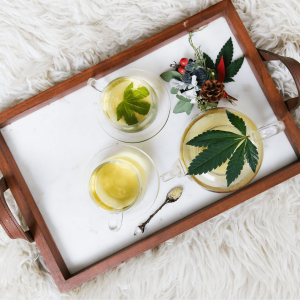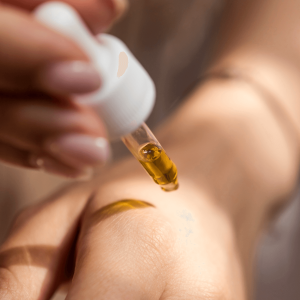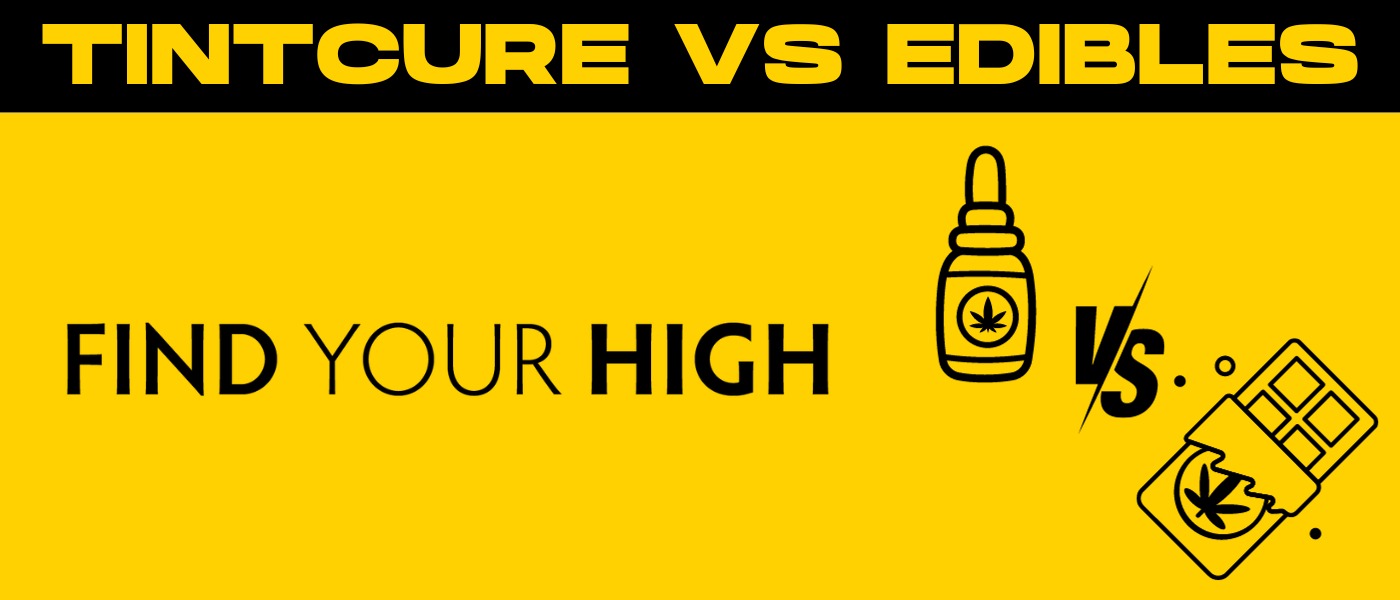In the thriving world of cannabis products, two superstars have quickly stolen the spotlight: tinctures vs. edibles.
These amazing options are versatile, discreet, and pack a punch, making them incredibly popular among a wide range of people.
In this blog, we’ll dive into the details of tinctures as well as edibles, explore why they’re in such high demand, and give you some pointers to consider when choosing between these two awesome ways to enjoy cannabis. Let’s begin!
Tinctures: The Essentials
Put simply, tinctures are alcohol-based extracts of the cannabis plant.
The process of making tinctures involves soaking plant material—such as cannabis—in alcohol, allowing the alcohol to extract the plant’s therapeutic compounds over several weeks. The liquid created is then strained, creating a potent tincture that can be taken via oral consumption.
Benefits of Tinctures
Tinctures offer several advantages compared to other consumption methods.
- Tinctures have a fast onset of effects. Unlike edibles, which have to go through the digestive tract, tinctures are absorbed directly into the bloodstream through the mucous membranes in the mouth, leading to quicker desired results.
- Tinctures allow for precise dosing. Every drop of a cannabis tincture delivers a consistent amount of active compounds, enabling consumers to adjust their dose with accuracy based on the dosing instructions.
- Tinctures are versatile in use. They can be taken sublingually (under the tongue), added to food or drinks, or even applied topically, depending on the desired effects.
It’s important to note that tinctures are not without potential limitations.
For one, the taste of many tinctures can be quite strong and unpleasant due to the alcohol base, which could deter some users. However, brands that focus on crafting truly tasty tinctures do exist — take Yummi Karma, for example!
Additionally, while cannabis tinctures tend to allow for fast and precise dosing, it may take some trial and error to find the correct dosage, especially for first-time users. Due to their potency, it’s crucial to start with a small dose and increase gradually, as overconsumption can lead to a ‘bad high.’

Edibles: The Basics
Edibles are a category of cannabis-infused goodies that consumers can eat as an alternative to either smoking weed or vaping.
You’ll find them in all sorts of food products like chocolates, hard candies, drinks, baked goods, and even more savory foods and snacks. The variety of options allows consumers to tailor their experience based on their own preferences and lifestyles!
The Benefits of Edibles
The advantages of eating edibles are numerous, making them a popular choice for many stoners.
Firstly, most edibles are discreet and odorless. Unlike smoking, which can attract unwanted attention due to its distinctive smell, consuming an edible cannabis product is as inconspicuous as enjoying a regular snack.
Secondly, cannabis edibles tend to offer prolonged effects. The ingested cannabinoids in marijuana edibles are processed by the liver, resulting in a longer-lasting and often more intense experience.
Lastly, edibles are easy to incorporate into daily routines, with many consumers enjoying them as a part of their meals or snacks throughout the day.
However, there are some challenges associated with edible consumption.
One common issue is the delayed onset of effects. Unlike smoking, where effects are felt almost immediately, edibles can kick in anywhere from 30 minutes to 2 hours. This can lead consumers to consume more in the belief that the initial dose was insufficient, leading to uncomfortable or unintended results.
Dosing can also be challenging with edibles, as the concentration of cannabinoids can vary greatly between cannabis products.
It’s important for those who consume cannabis to start with a low dose and gradually increase as needed to avoid undesired effects as well as ensure that their edible is sourced from a licensed dispensary and properly dosed to begin with.

Key Differences Between Tinctures and Edibles
When comparing tinctures and edibles, a significant difference lies in the time it takes to experience the onset of effects.
Tinctures, often consumed sublingually (under the tongue), are absorbed directly into the bloodstream, resulting in quicker effects, typically within 15 to 45 minutes.
On the other hand, edibles must be digested and metabolized by the body, which can delay the onset time of effects to anywhere from 30 minutes to 2 hours, depending on individual factors and the contents of the consumer’s stomach.
The precision and control over dosing also differ between tinctures and edibles. Tinctures come with a measured dropper, allowing for more precise and adjustable serving sizes; you can easily modify your dose drop by drop.
However, edibles, particularly homemade ones, can have inconsistent concentrations of active ingredients, making precise dosing more challenging.
Tinctures vs. Edibles: Duration of Effects
The duration of effects is another key difference. Cannabis tinctures, despite their quick onset and intense effects, generally have a shorter duration of effects, ranging from 2 to 3 hours.
In contrast, edibles can have effects that last anywhere from 4 to 6 hours, sometimes even longer, as the active ingredients are released slowly during digestion.
Lastly, individual metabolic rates are crucial in how the user experiences tinctures and edibles.
Since our bodies process edibles through the digestive system and liver, a person’s metabolic rate greatly influences the potency and duration of the effects.
However, the effects of tinctures are less influenced by metabolism, as they bypass the digestive system, leading to a more consistent experience across users.
Tinctures vs. Edibles: Choosing the Right Consumption Method
Deciding between tinctures and edibles can seem daunting but it really boils down to your personal preferences and goals. Here are a couple of suggestions to consider:
- User Preferences and Goals: If you prefer a method that allows for precise dosing, tinctures might be your best bet. They are taken sublingually and enter the bloodstream quickly, providing faster relief. On the other hand, if you’re someone who enjoys an especially tasty treat and doesn’t mind a delayed onset, edibles may be the choice for you.
- Medical vs. Recreational Use: If you’re a medical user looking for instant relief, tinctures are a great option due to their quick action. However, recreational users who are in no rush and want to savor their experience may find edibles more appealing due to their longer-lasting effects.
If you’re dealing with chronic pain, a tincture’s quick absorption rate will provide faster relief.
However, if you’re aiming for a slow, controlled, all-day relief or seeking an especially discreet method of cannabis consumption, an edible might be more suitable.
Remember, the best method for you depends on your individual needs and circumstances.

Dosage and Safety Tips
Understanding the proper dosage of tinctures and cannabis edibles is crucial to having a safe and enjoyable experience.
As both options can be highly potent, first-time users should start with a small dose and gradually increase based on their comfort level and reaction. Remember, it can take longer for edibles and tinctures to take effect compared to other forms of consumption, so patience is key. Potential side effects can include drowsiness, dizziness, and changes in appetite.
It’s worth mentioning that the effects of these substances can also interact with other medications, medicinal chemicals, or substances. So, it’s a good idea to consult with a healthcare provider before starting any new routine.
Exploring the Diverse Range of Cannabis Tinctures and Edible Products
The cannabis market is overflowing with a diverse array of tinctures and delicious edibles, thanks to the evolving tastes of cannabis consumers. From honey infused with THC and THCa to CBD tinctures, the selection is truly impressive.
With a range of strengths and flavors, these products cater to diverse preferences and offer innovative ways to enjoy cannabis. Whether you’re interested in the psychoactive effects of THC and THCa or the therapeutic benefits of CBD, there’s something for everyone.
Innovative Products and Consumption Methods
Innovation is happening all the time in the cannabis industry. Apart from the usual ways of consuming it, there are cool new products like transdermal patches and bath bombs that make using cannabis even better. These advancements are opening up new possibilities and making consuming cannabis even more accessible.

Summary
In conclusion, in the ongoing battle between alcohol-based tinctures and cannabis oil tinctures vs. edibles, both options present unique differences and considerations. While edibles often provide a longer-lasting effect but take more time to kick in, tinctures are quickly absorbed for fast relief but with a shorter duration.
Ultimately, your personal preference and specific needs should guide your choice between these two methods.
Frequently Asked Questions
1. Do tinctures work better than edibles?
Tinctures and edibles have different therapeutic effects due to factors like metabolism, concentration, and intake methods. Tinctures, taken sublingually, are absorbed faster for quicker effects. Edibles take longer to kick in but last longer. The effectiveness is determined by personal preferences and needs.
2. Can tinctures get you really high?
The ‘high’ from tinctures depends on the type of tincture used and the cannabinoid content they contain. Tinctures high in THC (tetrahydrocannabinol) can induce a strong high. However, CBD-rich cannabis tinctures generally won’t produce the same effect.
3. How long do tinctures keep you high for?
On average, the high from a THC-rich cannabis tincture lasts 2 to 4 hours but may be longer depending on individual factors. Unlike edibles, cannabis tinctures’ cannabinoids enter into the bloodstream rapidly, producing effects within 15 to 45 minutes. However, the duration and intensity of the high can be greater for new or infrequent users.
4. Why don’t tinctures get me high?
Cannabis tinctures don’t usually cause the typical psychoactive effects associated with marijuana edibles. This is because sublingual absorption allows cannabinoids to enter the bloodstream directly, bypassing digestion and liver metabolism. It’s a preferred method for precise dosage control and rapid onset of the cannabinoids’ effects, especially for medicinal purposes. However, consuming a large quantity of THC-containing cannabis tincture may result in more intense psychoactive effects.

 Rewards
Rewards




